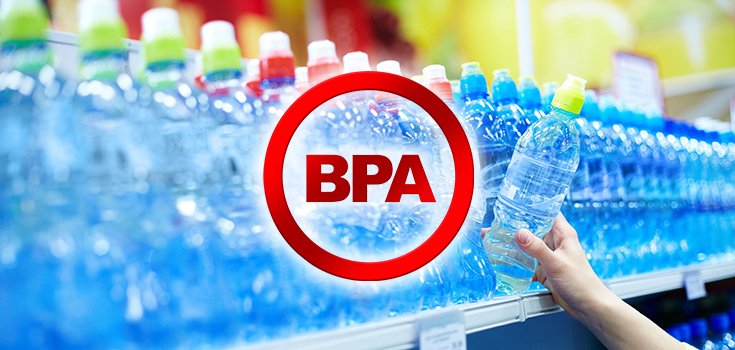Study: BPA-Free Plastics are Not as Safe as They Seem

Bisphenol-A (BPA), a chemical found in plastics that mimics the female hormone estrogen in the body, has been banned in baby bottles, sippy cups, and the lining of cans of formula since 2012 due to public outcry and toxicity research. Since then, ‘safer’ BPA alternatives have been used in products, but a new study adds onto growing evidence showing that BPA-free alternatives may not be as safe as consumers think.
In the study, BPA alternatives not only decreased sperm counts in mice, but the decrease led to less-viable eggs.
While more research is needed to determine if the findings can be replicated in humans, the authors believe BPA alternatives likely have similar effects in people.
BPA: A Dangerous, Ubiquitous Chemical
BPA has been used in food and beverage packaging since the 1960’s. The chemical is specifically used to make hard, clear plastic called polycarbonate that is found in the protective lining of some metal food and drink cans. BPA can leach into food from plastic containers, especially if they are old or damaged – including from being microwaved.
Study: Nearly 40% of Canned Goods Still Contain Gender-Bending BPA Chemical
In fact, BPA is still so prevalent that detectable levels of the chemical were found in 93% of more than 2,500 urine samples taken from the U.S., according to data from the 2003-2004 National Health and Nutrition Examination Survey (NHANES III) from the U.S. Centers for Disease Control and Prevention (CDC). (Yeah, the data is a bit old.)
Despite the fact that BPA has been linked to everything from asthma to early puberty and breast cancer, the U.S. Food and Drug Administration (FDA) has only banned the substance in baby bottles, sippy cups, and infant formula packaging. It is still widely used in reusable water bottles, plastic plates, grocery receipts, canned goods, and even some dental sealants. [2]
The agency states on its website:
“Studies pursued by FDA’s National Center for Toxicological Research (NCTR) have shown no effects of BPA from low-dose exposure.”
The problem is that because BPA is so ubiquitous, those low-dose exposures can add up over time.
Unfriendly Alternatives
All of these chemicals have one thing in common: They all have “BP” in their names. That is because they all share the same basic chemical structure of a bisphenol. Each new version only has slight differences.
The latest study shows that the common BPA replacements BPS, BPF, BPAF, and diphenyl sulphone can interfere with “the very, very, very, very earliest part of making eggs and sperm,” said researcher Patricia Hunt, a geneticist at Washington State University.
Both mice and humans normally receive 1 copy of genetic material from each parent, then splice together bits of each to form the chromosome they pass on to their children. Hunt and her colleagues found that BPA and its alternatives disrupt the process in a way that could eventually lead to lower sperm counts in males and poor egg quality in females. And those changes can be passed on to future generations.
Researchers are concerned about the effects of BPA alternatives in humans, which largely remain a mystery.
Hunt said:
“They look a lot like BPA. It stands to reason that they’re going to behave a lot like BPA.”
Leonardo Trasande, director of the division of environmental pediatrics at NYU Langone Health, who was not involved in the research, agreed, adding:
“It speaks to the reality we need to regulate chemicals, not 1 by 1, but in a class – in a way that allows us to tackle compounds that function with similar structure.”
The study was published September 13 in the journal Current Biology.
Sources:
[1] Live Science
